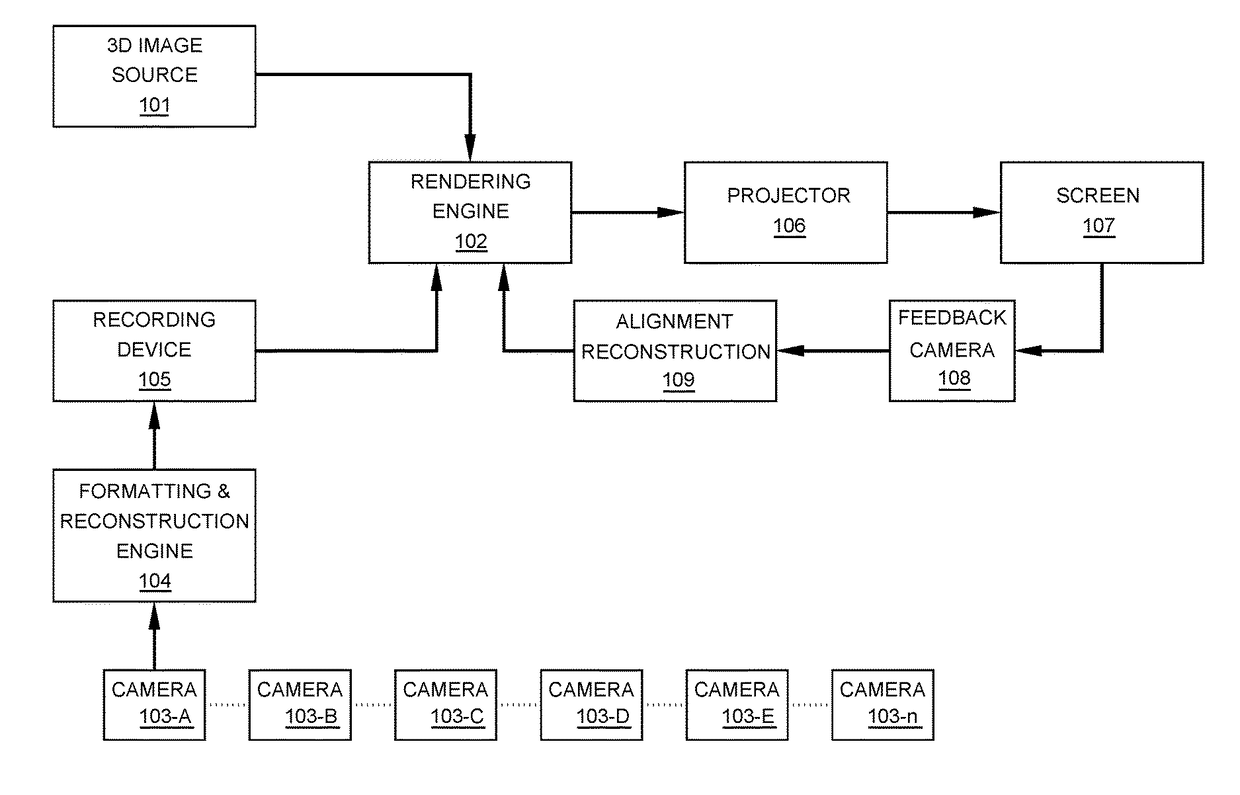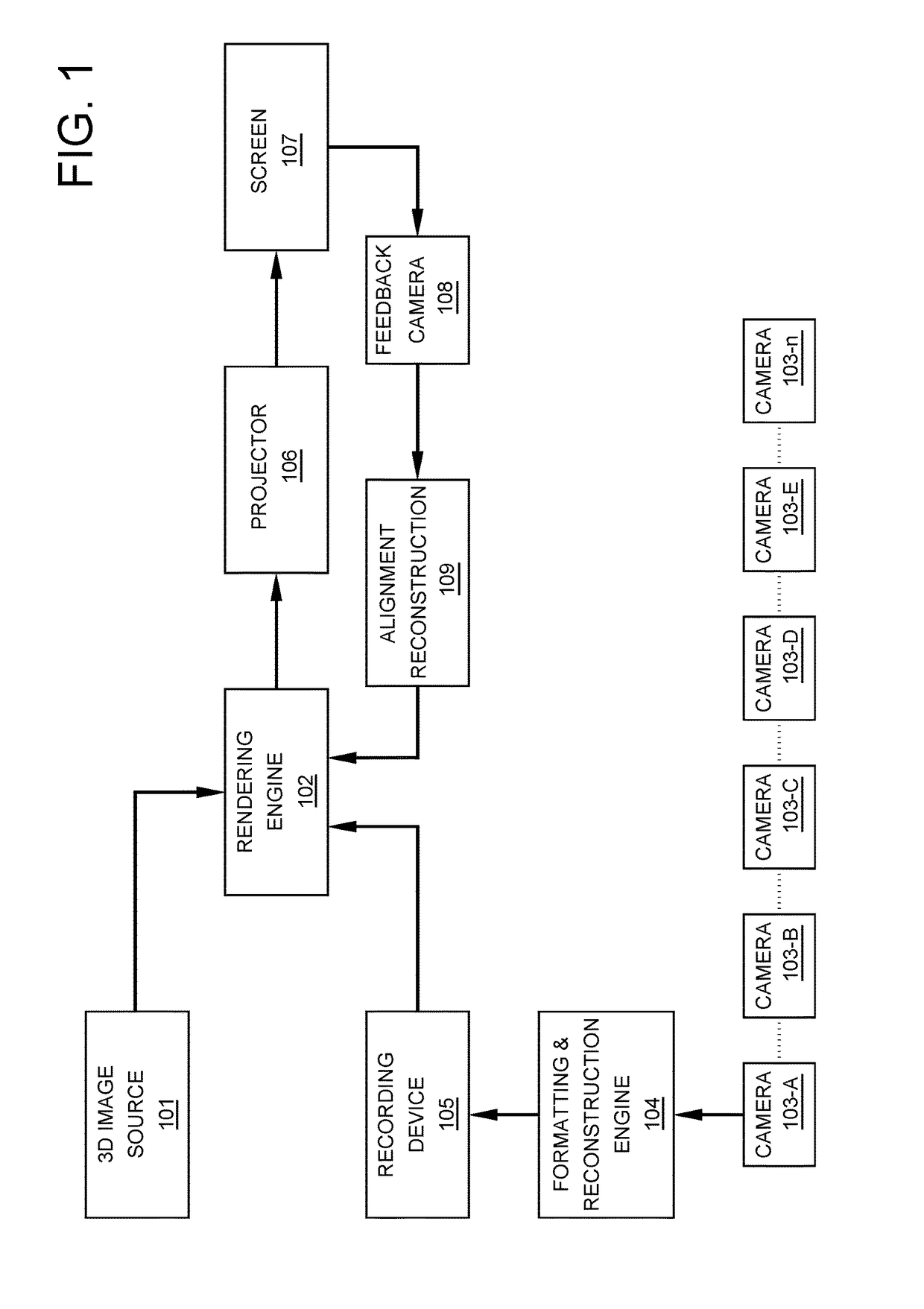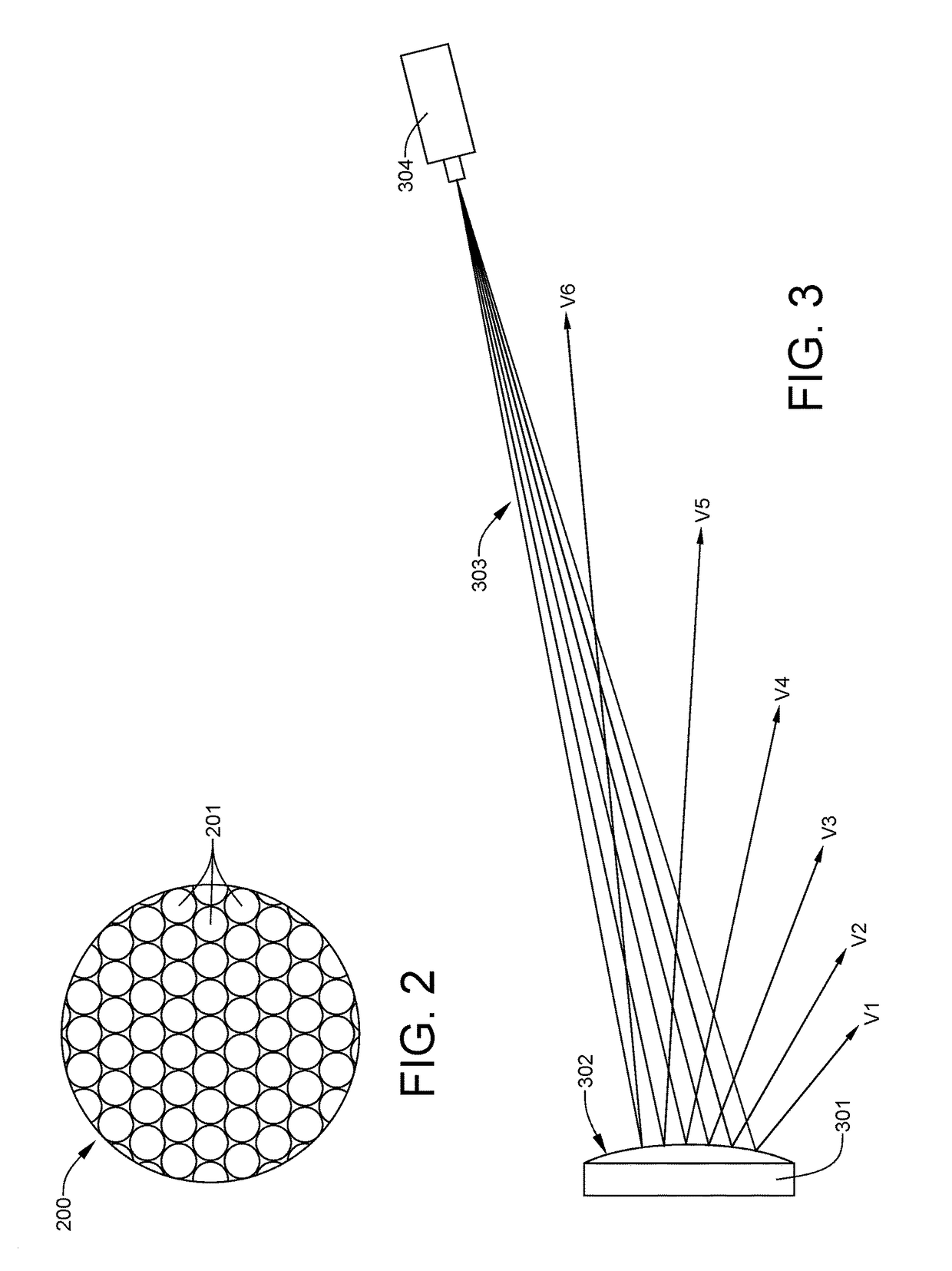Three-dimensional imaging system
- Summary
- Abstract
- Description
- Claims
- Application Information
AI Technical Summary
Benefits of technology
Problems solved by technology
Method used
Image
Examples
Embodiment Construction
[0053]The present invention provides a novel way of simulating three-dimensional images on a display screen without the need for a viewer to wear image-splitting glasses. Although it incorporates elements of both lenticular printing and holography, it is likely best characterized as a super set of lenticular printing. The invention can be used to portray both individual three-dimensional photographs or three-dimensional movies. Given that the manufacturing methods for monitors, projectors, DLP® imaging systems, and other displays is likely to continue to produce improved resolutions with time, it will become practical to use lensing systems to reflect or refract small collections of pixels at various angles to produce 3D “holographic” screens and display systems. The effective image resolution is reduced from the native screen resolution, but to the extent that the native resolutions are unnecessarily high for human viewing, spatial (angular) resolution can be improved or “traded of...
PUM
 Login to View More
Login to View More Abstract
Description
Claims
Application Information
 Login to View More
Login to View More - R&D
- Intellectual Property
- Life Sciences
- Materials
- Tech Scout
- Unparalleled Data Quality
- Higher Quality Content
- 60% Fewer Hallucinations
Browse by: Latest US Patents, China's latest patents, Technical Efficacy Thesaurus, Application Domain, Technology Topic, Popular Technical Reports.
© 2025 PatSnap. All rights reserved.Legal|Privacy policy|Modern Slavery Act Transparency Statement|Sitemap|About US| Contact US: help@patsnap.com



